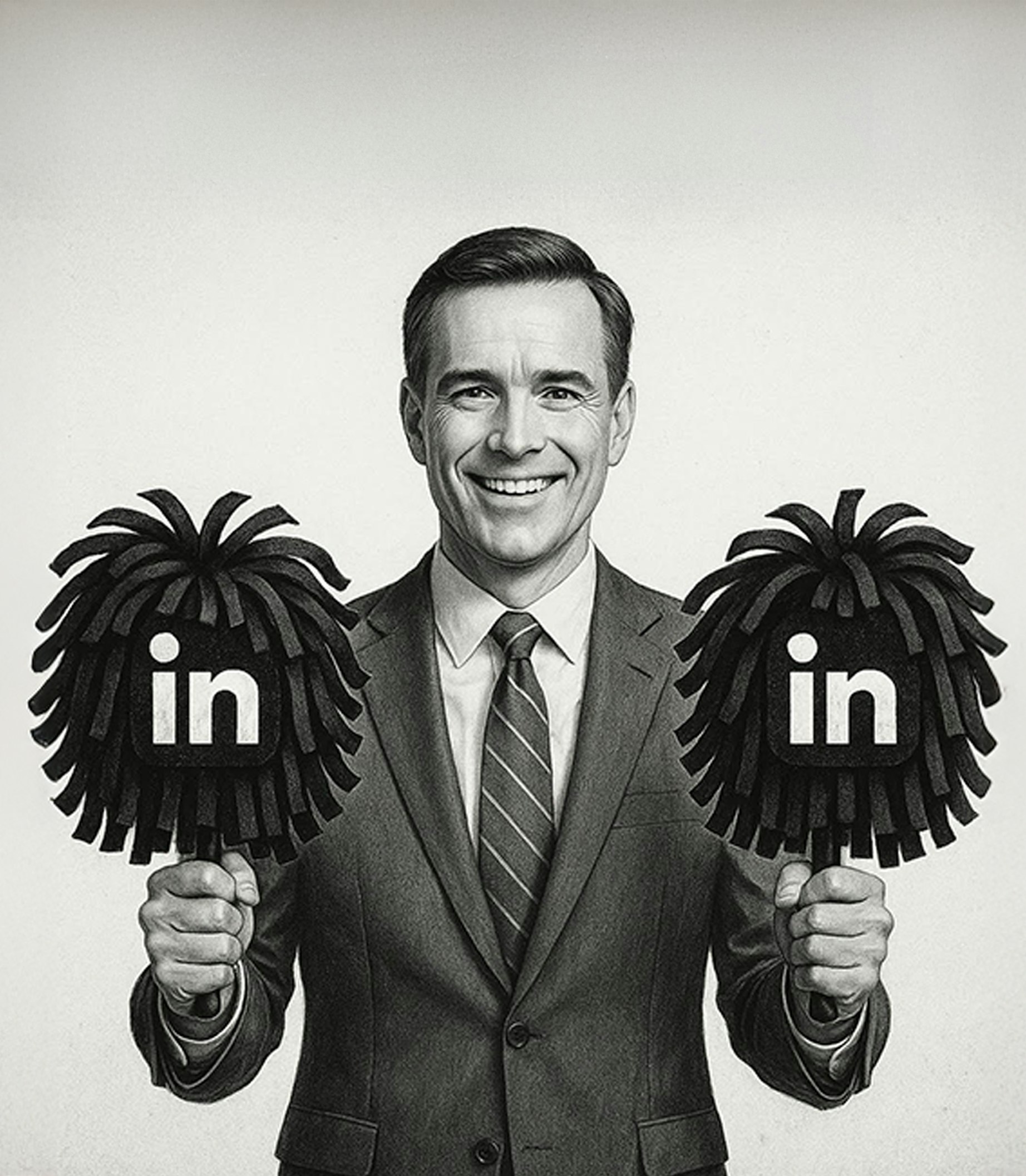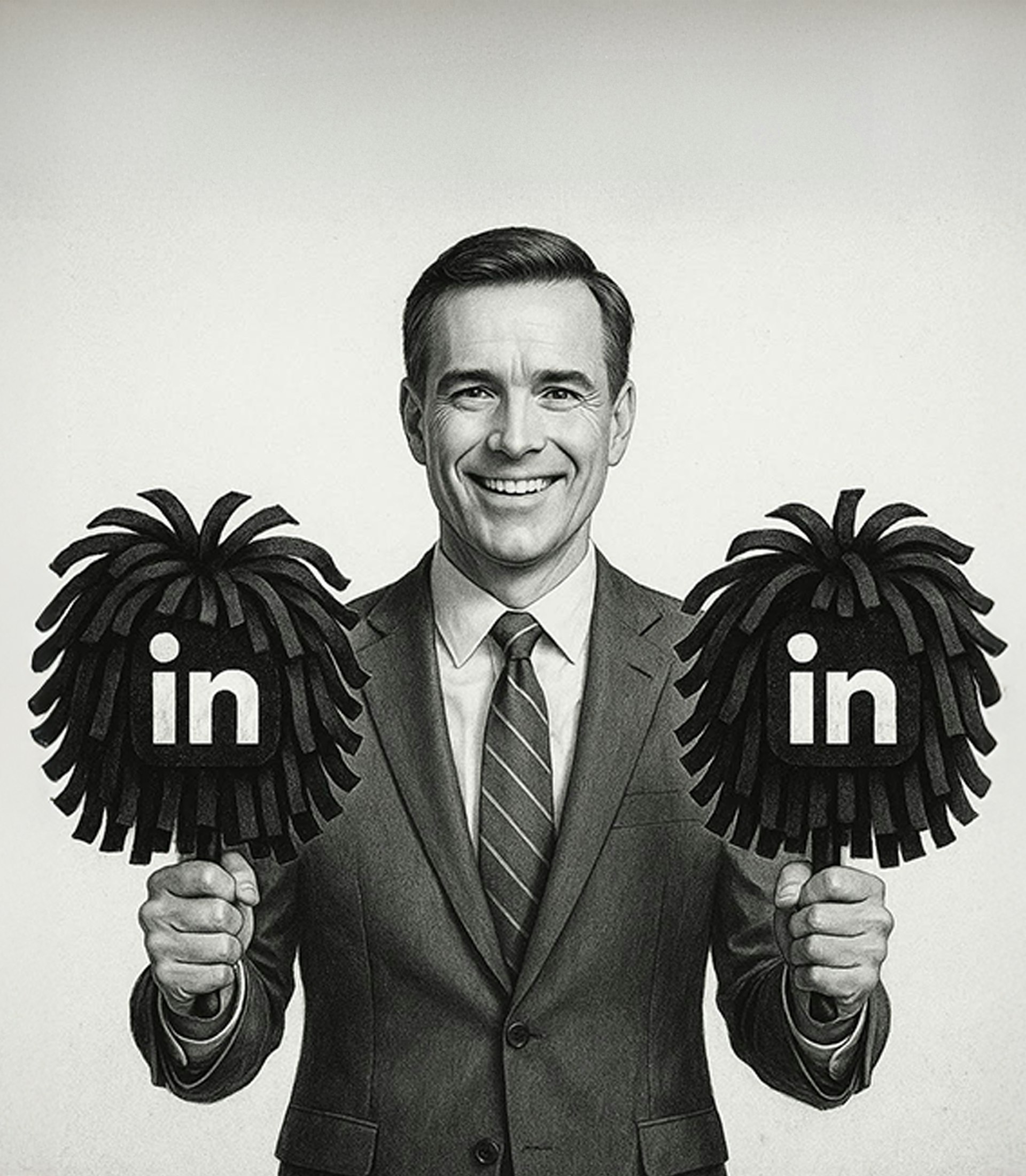
words by
Joe Anthony
May 30, 2025
culture hack
Execs Need Dopamine Too: How LinkedIn Made Marketing Mediocre
LinkedIn was supposed to be the platform for professional progress—a place for ideas, insights, and industry connection. But somewhere along the way, it became a digital ego chamber for the modern CMO and CEO. Today, what Instagram is to influencers, LinkedIn is to executives: a perfectly curated feed of self-promotion disguised as thought leadership.
Scroll for five minutes and you'll see it: a carousel about “purpose,” a video recap from Cannes with Drake music in the background, a humblebrag about a “challenging but rewarding” rebrand, and of course, a glossy photo op from an internal panel where someone "left inspired." It’s a feedback loop of performative progress, where every initiative is “bold,” every campaign is “game-changing,” and every exec is a “culture builder.”
But here’s the uncomfortable truth: a lot of it is just noise. And worse, it’s training us to confuse applause with impact. It's also feeding a craving—because execs need dopamine too. The likes, the comments, the viral validation—they hit the same pleasure centers that social media exploits everywhere else. For many marketing leaders, these posts become less about showcasing the work and more about scratching an itch for recognition. The feed isn't just communication—it's affirmation.
On LinkedIn, validation is algorithmic. If you're a CMO or CEO with a high-ranking title, your posts are going to trend. Not necessarily because the work is good, but because hundreds of people are trying to stay in your good graces. Likes come from employees hoping for visibility. Comments pour in from agency partners trying to win your next brief. The more senior you are, the more inflated your content becomes—because the engagement is less about the idea and more about the person behind it.
The result? A distorted mirror. Executives start to believe that every campaign they touch is the next “Got Milk” or “Just Do It.” Because when 1,200 people like your post within 12 hours, who wouldn’t? The feedback loop feels real—even when the actual results don’t back it up.
Part of the problem is that many CMOs and CEOs are incentivized to talk about their work like it's part of their job description—because, in a way, it is. Not just to amplify their company’s visibility, but to build their personal brand as a high-impact leader. Every post is a carefully calibrated signal flare aimed at the next recruiter, the next board member, the next opportunity. Once the stock options vest or the contract hits its sunset clause, the playbook flips to the next gig. And just like that, the same executive who was pounding the table for Brand A last year is now swearing allegiance to Brand B. It begs the question: how seriously can we take your “authentic passion” for a brand if it expires the moment your LinkedIn headline changes?
The average tenure of a Chief Marketing Officer today is just 40 months, according to Spencer Stuart’s 2024 CMO Tenure Study—a statistic that underscores the revolving-door nature of marketing leadership and the absence of long-term accountability.
LinkedIn has created a culture where marketing isn’t measured by business outcomes or cultural resonance—it’s measured by social reach and the echo of professional cheerleading. We now launch campaigns with internal hype videos before they even hit the market. We write case studies before we have case results. We reward the post, not the performance.
That’s not to say great work isn’t out there. It is. But LinkedIn’s content culture has made it harder to separate true innovation from executive-brand theater. We’ve created a stage where every initiative gets a standing ovation—and as any creative knows, constant applause doesn’t sharpen the work. It softens it.
What LinkedIn has done is give marketing leaders a direct line to their professional fanbase, and while that’s not inherently bad, it becomes dangerous when we start mistaking noise for effectiveness. When we optimize more for perception than performance, marketing doesn’t just become mediocre—it becomes hollow.
We need to remember that good work doesn’t need coddling. It doesn’t require 2,000 likes or a branded behind-the-scenes reel. Good work makes noise on its own. It creates impact, drives results, and earns its own validation—out there in the real world, not just in the feed.
Until we relearn that, marketing will keep looking better than it actually performs.





















